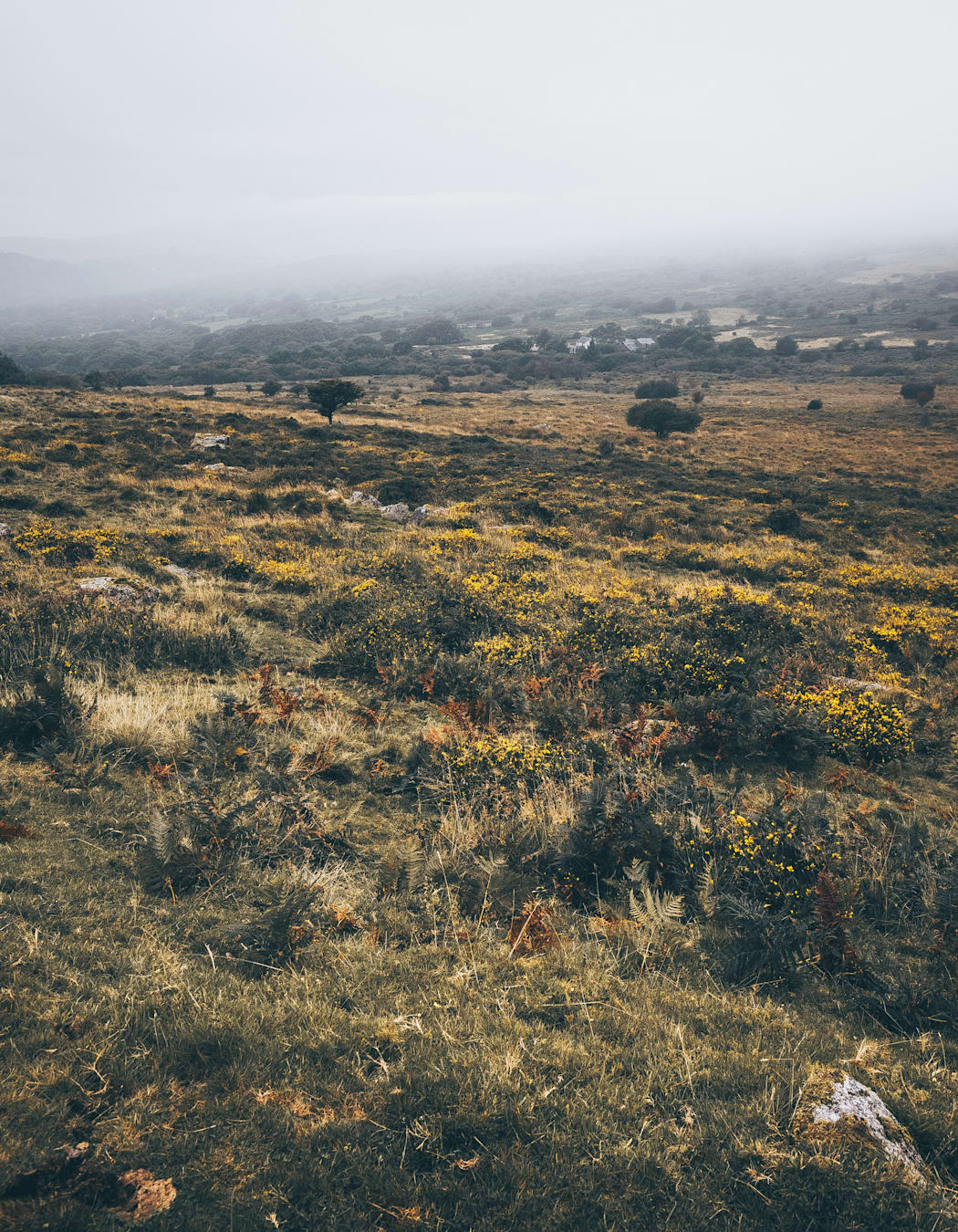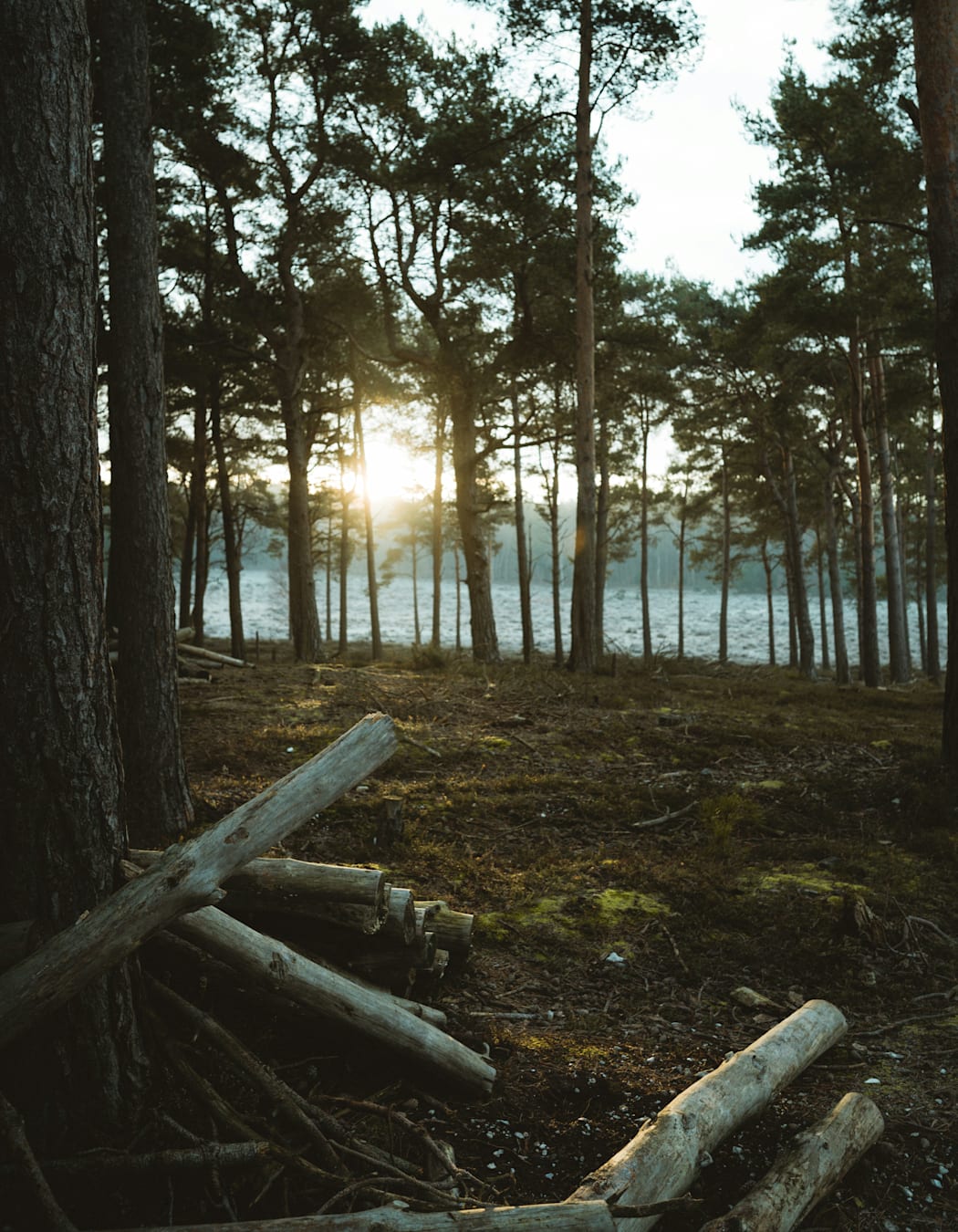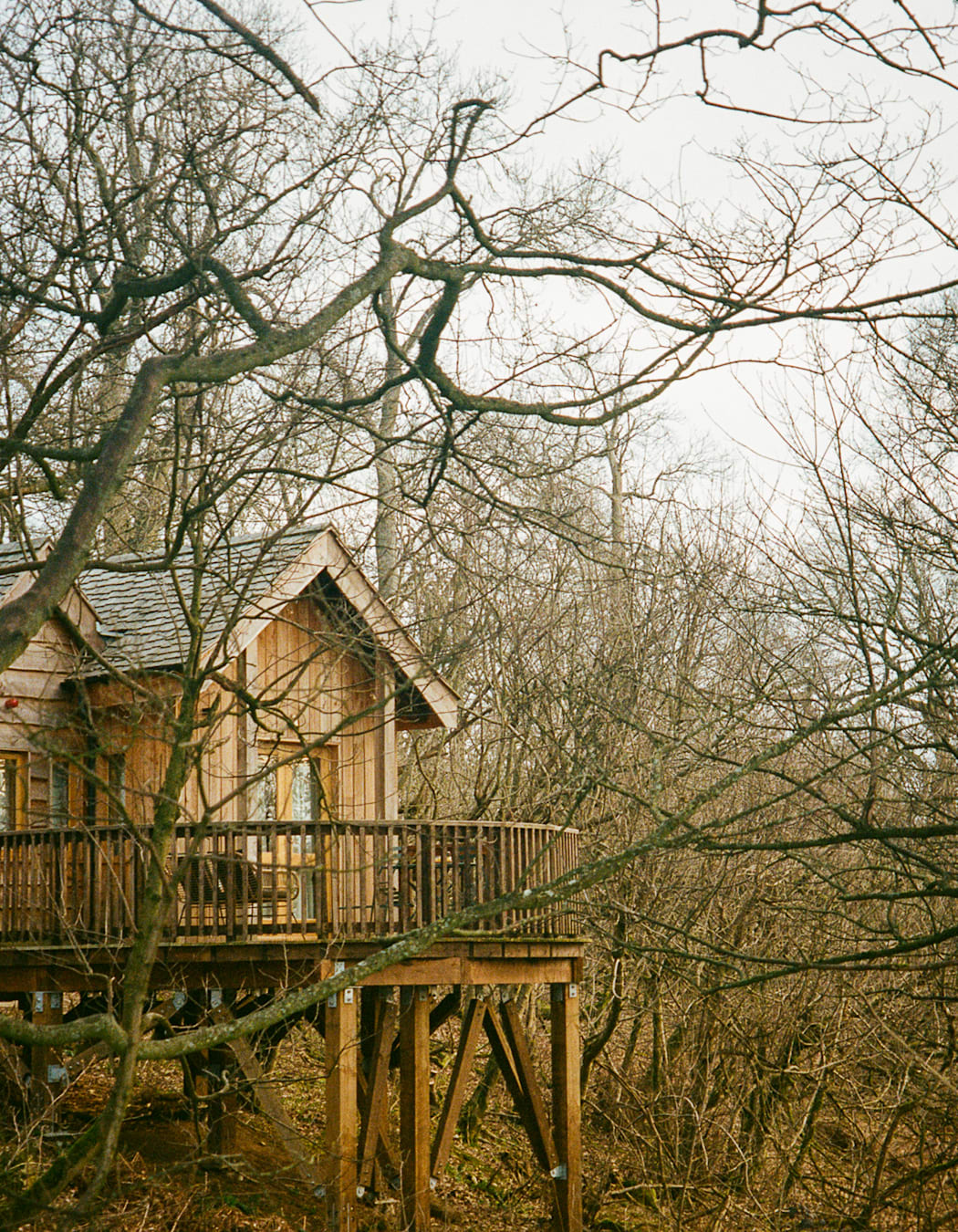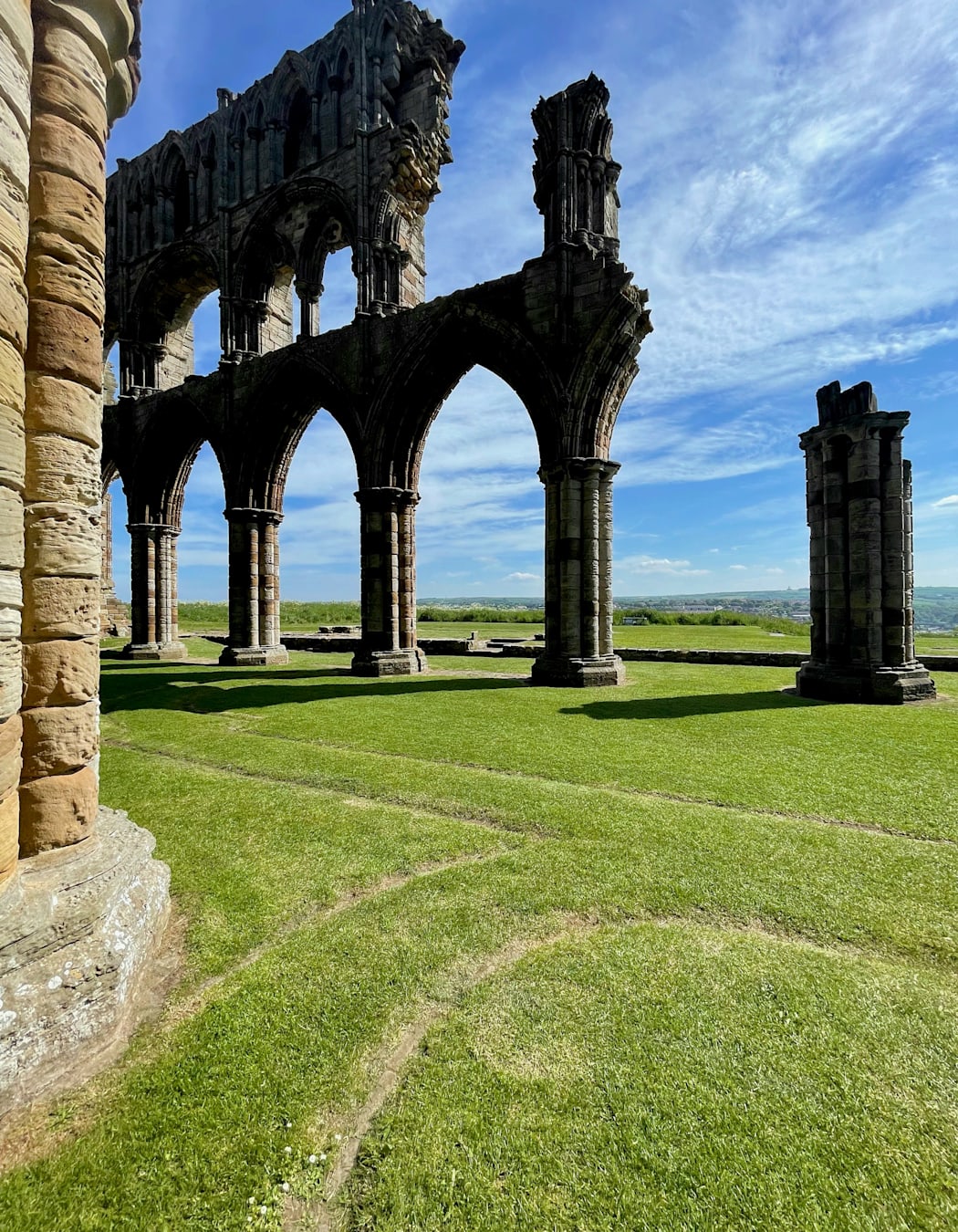What England has in turbo-charged metropolises, it also has in pin-drop-quiet green space. That’s because for city-dwellers, lungfuls of fresh air are never far away — 10% of the country’s land area is given over to national parks, of which (pub quizzers, take note) England boasts 10.
Geographically, each has its own subtle character, but all share the promise of well-marked walking trails leading to rewarding vistas, and a chance to ditch the device and connect instead with nature. No-one wants to go on holiday by mistake, so avoid Withnail and I-esque disaster with our beginner’s guide to England’s 10 national parks.
LAKE DISTRICT NATIONAL PARK
Cumbria

Rothay Manor
Tallest, deepest, longest, biggest…the Lake District National Park hogs the superlatives. Yes, it’s England’s biggest (and most visited) national park, containing, in Scafell Pike, the country’s highest peak, and in Windermere its largest body of water. The crisp, clean air and majestic scenery has fuelled the imaginations of poets, authors and children’s writers, too.
Natural wonders Those eponymous lakes spiral out from a central massif like the spokes of a wheel. Windermere, Coniston, Ullswater and Derwentwater are the household names (and most popular for watersports), but all have a distinct personality worth exploring. For instance, the towering peaks of Scafell Pike, Great Gable and Lingmell form an impressive backdrop to glorious Wast Water. To the north of Grasmere, Helvellyn’s famous knife-edge ascent is for those with a sturdy head for heights.
Longer walks The 70-mile Cumbrian Way runs from Carlisle to Ulverston via the village of Keswick and Coniston Water, taking in plenty of the Lake District’s top panoramas.
Day hikes The 10-mile loop known as the Fairfield Horseshoe, popularised by guidebook author and local hero Alfred Wainwright, starts and ends in Ambleside with views of Windermere’s great length. Lesser-trodden but no less impressive are the fells around Buttermere. One of them, called Haystacks, is where Wainwright’s ashes are scattered.
Cultural highlights As arbiters of romance, we’ve a soft spot for the Lake Poets, key figures in the 19th-century Romantic Movement. Wordsworth, their figurehead, lived at Dove Cottage in Grasmere, which has been cleverly adapted for visitors. He, like the millions who flock here every year, loved a good hike — but if your feet grow tired, take the Victorian steamer across Ullswater, whose shore is lined by his oft-misunderstood daffodils.
For families If you can stomach the crowds, little Smiths will find wonder at the World of Beatrix Potter in Bowness-on-Windermere, the children’s author being not just inspired by the Lakes but also one of its keenest conservationists. Or, set sail for Wild Cat Island and the secret harbour in honour of Swallows and Amazons author (and former spy) Arthur Ransome, with boat trips on Coniston Water.
Stay Forest Side, Rothay Manor, Linthwaite House
Further reading 48 hours in… The Lake District
DARTMOOR NATIONAL PARK
Devon

Dartmoor National Park
The wild and mist-sodden open moorland of Dartmoor National Park is Hound of the Baskervilles country, which can be beautifully bleak and isolated. At the margins of the moor, streams tumble over waterfalls and along boulder-strewn ravines, and cosy granite longhouses hunker down in the valleys.
Natural wonders Capped by wind-ravaged granite tors, surrounded by marshy valleys, and with coarse grass sprouting from infertile soil, no wonder Sir Arthur Conan Doyle chose Dartmoor to set his diabolical hounds loose on Sherlock Holmes. The hardiest of animals make their home here, such as wild Dartmoor ponies, otters, bats and dormice.
Longer walks Adventurers may want to challenge themselves on the Dartmoor Way, a 100-mile circuit of the park that takes roughly 10 days.
Day hikes The 10-hour Templer Way follows a granite tramway from the rocky outcrop of Haytor across the moor through forest and wildflower meadows, ending at the seaport of Teignmouth.
Cultural highlights Play Moses at Buckland Beacon, where the 10 commandments have been carved into granite rocks overlooking the Dart Valley. Or, there are castles in varying states of ruin: Okehampton Castle, built by the Normans; 13th-century Lydford Castle, with its ‘detestable’ prison; and the National Trust’s Castle Drogo, the last to be built in England, designed by Country Life favourite Edwin Lutyens.
For families Set in ancient woodland, Becky Falls cascades over moss-coated boulders, creating a magical setting for animal talks and nature challenges for children. If the kids get a taste for crashing waters, there’s a bigger waterfall an hour away at Lydford Gorge.
Stay Bovey Castle, Weeke Barton, Lympstone Manor
YORKSHIRE DALES NATIONAL PARK
Mostly North Yorkshire (a bit of Cumbria and Lancashire)
The Yorkshire Dales National Park is formed of three principal valleys that were carved by ice-age glaciers: Swaledale, Wharfedale and Wensleydale (as well as a handful of smaller ones), which are usually topped by moorland and criss-crossed by over 7,000 miles of evocative dry-stone wall.
Natural wonders Malham Cove is a soaring limestone amphitheatre used as the backdrop to scenes in Harry Potter and the Deathly Hallows. Gordale Scar, a dramatic ravine with overhanging cliffs, also has a Hollywood CV (Dark Crystal fans, take note). Gaping Gill is a cave system where potholers can descend into the UK’s tallest underground waterfall, while Hardraw Force and Aysgarth Falls are impressive, too, but mercifully above ground.
Longer walks The Yorkshire Three Peaks — Pen-y-Ghent, Ingleborough and Whernside — can be conquered as a 24-mile circular hike. It involves 1,600 metres of vertical ascent, so only the hardiest hikers attempt it as part of an organised one-day challenge.
Day hikes The Malham Landscape circular is a three-hour hike taking in waterfalls, Gordale Scar and Malham Cove. Lesser-trodden is the six-mile walk from the hamlet of Muker through Swaledale to the picturesque village of Keld and back again past the ruins of an abandoned farmhouse, Crackpot Hall.
Cultural highlights The single-mindedness of Victorian engineers is evident in the Settle-Carlisle railway, which passes through the remote regions of the Yorkshire Dales, crossing a remarkable 20 viaducts. The grade II-listed Ribblehead Viaduct is an icon in its own right. Or give your Insta-feed a gothic twist with selfies from Fountains Abbey, a ruined Cistercian monastery.
For families Aside from stocking some of Yorkshire’s finest cheeses, you can enjoy a grand day out at the Wensleydale Creamery, where there are activities for children (free at weekends), especially those with a weakness for Wallace and Gromit.
Stay Grantley Hall, Penny Bun
THE NEW FOREST NATIONAL PARK
Hampshire

New Forest National Park
‘New’ when not-so-new William the Conqueror named it so, the New Forest’s oak woodland is actually primaeval (so not new at all). There isn’t even too much forest here; only a quarter of the park is woodland, the trees having been felled to build Nelson’s fleet for the battle of Trafalgar. Still, 1,500 fallow deer, introduced by those Norman kings, have survived, only to be upstaged by the park’s famously free-roaming horses and ponies.
Natural wonders The animals are this national park’s USP. As well as those wild horses and ponies, you may find cattle and donkeys wandering freely, sometimes into villages and across roads. Oh, and pigs, who’re sent out to eat the acorns harmful to horses.
Day hikes Start at the Green Dragon in Brook for a seven-mile circular walk to Minstead, taking in the Rufus Stone where William II was killed by an arrow while out hunting. Or, the four-mile, figure-of-eight stroll between Pondhead and Beechen Lane just south of Lyndhurst, carpeted by bluebells come spring.
Cultural highlights Buckler’s Hard is the 18th-century shipyard where Nelson’s battle-of-Trafalgar boats were assembled. Lyndhurst, Brockenhurst and Lymington are charming towns, the latter being a gateway to the Isle of Wight. Hire a private boat (and skipper, if needed) to cross the Solent for a close-up of the Needles: iconic chalk stacks that jut out from the isle like pirate’s teeth, crowned by a lighthouse.
For families Gear up for Beaulieu Motor Museum, which displays cars ranging from legendary F1 racers to Chitty Chitty Bang Bang.
Stay The Pig, Lime Wood, Chewton Glen, New Park Manor
Further reading 48 hours in… The New Forest
PEAK DISTRICT NATIONAL PARK
Mostly Derbyshire (a bit of Staffordshire and Yorkshire)

Wildhive Callow Hall
Set in the midlands, the Peak District National Park has two distinct landscapes that reflect England’s north and south. And while the legacy of the Industrial Revolution can be uncovered in its railways, canals, mill buildings and lime kilns, wildflowers and quiet woodlands have rendered it pleasantly photogenic these days.
Natural wonders The southern part of the Peak District — known as the ‘White Peak’ — is gentler, a closely knit patchwork of meadows, hilly woods and farmland on a bed of limestone. To the north is the so-called ‘Dark Peak’, wilder, rugged, with heather-clad moors superimposed on craggy millstone grit.
Longer walks The high, challenging peaks of the scenic Edale mark the starting point of the 250-mile Pennine Way, which stretches northward all the way to Scotland.
Day hikes The eight-mile Monsal Trail makes inventive use of a defunct railway, with old stations and their platforms repurposed as eateries. Elsewhere, Dovedale is the most charming of the Peak District’s river valleys, with its stepping stones, cave systems and peculiar, wind-sculpted rocks.
Cultural highlights The Industrial Revolution may have broken out at Richard Arkwright’s mill in Cromford, but for history with a touch more glamour, there’s Chatsworth House, which was landscaped by Capability Brown and is stuffed with artworks by the likes of Rembrandt and Lucien Freud. No surprises that Jane Austen used it as inspiration for Mr Darcy’s Pemberley estate. Talking of surprises, nearby Haddon Hall is an unexpectedly intact stately home dating from the middle ages.
For families The Monsal Trail doubles as a safe and flat cycle route for children. Just outside the national park, near Matlock, are the Heights of Abraham, where there are cable cars, illuminated caverns and two adventure parks.
Stay Wildhive Callow Hall, Cavendish Hotel at Baslow
Further reading Out and about: a very British road trip
EXMOOR NATIONAL PARK
West Somerset and North Devon
Wild moorland streams gather into rivers which sprint through narrow, wooded valleys, or coombs, in Exmoor National Park. At its rugged coastline these gushing waterways plunge through gritstone cliffs into the Atlantic Ocean. Inland, beyond popular coastal villages such as Linton and Lynmouth, lies a misty, heather-flecked plateau that rises to Dunkery Beacon, the park’s highest point.
Natural wonders Wild playground Porlock Vale includes a pretty beach, marshland and a weir. See it on foot, horseback or along the coast in a kayak. You can climb up Dunkery Beacon from here, too. Watersmeet is a tree-cloaked gorge that centres around a National Trust tea room, and the Valley of the Rocks’ unusual caves and rock formations are precariously roamed by feral goats. Curlew, buzzards, Exmoor ponies, wild red deer and horned sheep live here too.
Day hikes The lovely Heddon’s Mouth circular walk passes through ancient woods before meeting the sea between some of England’s tallest cliffs. Try to spot some of England’s rarest butterflies here. A shorter circular hike is the three miles from Selworthy village through bluebell woods up to Selworthy Beacon and back down past the Iron-age Bury Castle hill fort. From the top are sweeping views of the moor and across the sea to Wales.
Cultural highlights Where the Oare and Badgworthy rivers meet is the tiny hamlet of Malmshead, and upriver, over its quaint stone bridge, is the Doone Valley, where R.D. Blackmore set his 18th-century novel Lorna Doone.
For families Families flock to the Big Sheep Farm and Theme Park, where there are rollercoasters, sheep races, lamb-feeding shows and other ovine attractions.
Stay Rest + Wild Exmoor, Yeotown Devon
SOUTH DOWNS NATIONAL PARK
Hampshire, West Sussex, East Sussex

No. 124 by Guesthouse
The pillowy curves of its gentle hills make ‘downs’ an appropriate term for the South Downs National Park. This is a land of wood, water and lots of chalk, on grand display in the shape of the Heritage Coast’s white cliffs or in giant man-made hill figures.
Natural wonders The Devil’s Dyke is Britain’s deepest, widest and longest dry valley, described by painter John Constable as ‘the grandest view in the world’. It’s a highlight of one of the many short hikes that carve up the South Downs Way, also taking in the manicured lawns of Alfriston, and the hill figures of the Long Man of Wilmington and the Litlington White Horse.
Longer walks The South Downs Way stretches for 100 miles between Winchester and Eastbourne, passing through picture-book villages with steeples, thatched cottages and village greens, before ascending onto dramatic cliffs such as the Seven Sisters and Beachy Head.
Day hikes Strolls along the Cuckmere River between Alfriston and Litlington are rewarded with fine ales at the Long Man brewery. Elsewhere, there’s an 11-mile hike between Amberley and Bignor Hill with views of the splendid Arun Valley, or well-regarded walks from the historic town of Lewes.
Cultural highlights The area’s gentle scenery is sometimes at odds with the radical thinkers it’s drawn here over the years. Charleston is the modernist home of the Bloomsbury group’s Vanessa Bell and Duncan Grant, which today hosts cutting-edge exhibitions and festivals. Nearby is Farleys House, home to surrealists Lee Miller and Roland Penrose, friends of Picasso, Miró, Man Ray and Leonora Carrington. Finally, just outside the park at the Towner Eastbourne you’ll find the pastel-hued paintings of local hero Eric Ravilious.
For families Drusillas Park is a zoo near Alfriston aimed squarely at toddlers and tweens, with soft play, water play, rides, mazes and hundreds of animals.
Stay Tree House Retreats, Artist Residence Brighton, No. 124 by Guesthouse
THE BROADS NATIONAL PARK
Norfolk and Suffolk
Centred on a latticework of rivers that sound like the line-up to a Victorian football team (Ant, Bure, Chet, Thurne, Waveney, Wensum and Yare), the Broads National Park is almost entirely flat, making it ideal for couples who’d rather sip IPA beside reed- and willow-fringed waterways than scramble up peaks.
Natural wonders Walkers, cyclists and sailors may spot otters, kestrels, owls, kingfishers and deer, among other wildlife, and there are no shortage of boat hire options for riding the scenic waterways. For added luxury rent a hybrid cruiser, which comes with a walk-in shower and can be charged at certain shorelines overnight.
Walks Stroll or cycle sections of the Weavers’ Way, which, well, weaves its way through many of the broads (open areas of water), taking in windmills, woodland and thatched roofs made from reeds; and spend more time than you planned outside waterside pubs and cafés.
Cultural highlights Two of the most picturesque windmills are Herringfleet Smock Mill near Lowestoft and Post Mill at Saxtead Green near Framlingham. Cruise up the River Ant to How Hill, where a grand Edwardian thatched house looks out over marsh and woodland. Cromer is a cute seaside town (with its own Banksy, no less), and the Raveningham Estate, with its 19th-century glasshouses and walled kitchen garden, is beautiful in spring.
For families Wroxham Miniature Worlds is actually quite big – 10,000 square feet, in fact, of model railways, vintage toys, slot cars, Lego and dolls house displays.
Stay Swan Southwold (25 minutes outside the park)
NORTHUMBERLAND NATIONAL PARK
Northumberland
The least populous park in this list, Northumberland National Park is a wilderness of peaceful hills and elusive wildlife. But all this quietude belies a turbulent past involving warring Scots and English, cattle drovers and whisky smugglers — and, more recently, the felling of England’s famous Robin Hood tree at the Sycamore Gap, in a section of Hadrian’s Wall.
Natural wonders The desolate Cheviot Hills straddle the Anglo-Scottish border and is capped by its highest peak, the Cheviot. On clear days you can see the Lake District — and some say Edinburgh — from here. There are views to the North Sea coast from Simonside, a ridge that looms over the market town of Rothbury. As for wildlife, look out for roe deer, red squirrels, barn owls and feral goats.
Longer walks The Hadrian’s Wall Trail takes several days, or can be broken up into shorter, more family-friendly day hikes.
Day hikes Head to Alwinton, a village set beside the River Coquet that’s an access point for some of the finest rambles in the area. A section of the Pennine Way, which passes through three national parks, reaches something of a climax at the 800-metre-high Cheviot before carrying on into Scotland.
Cultural highlights An enduring reminder of the Roman occupation of Britain, Hadrian’s Wall is a fixed frontier that stretches from coast to coast. In the peat bogs north of Cheviot’s summit you’ll find the remains of a B-17 bomber that crashed here during WWII, and below Simonside is a Bronze Age cemetery.
For families Right next door to Hadrian’s Wall, the Roman Army Museum and Magna Fort allows youngsters to imagine themselves as centurions at the fringe of the empire as they trace Rome and the wall’s history, guided by a holographic teacher.
Stay Beadnell Towers & Kitchen, Lord Crewe Arms (both 35 minutes outside the park)
NORTH YORK MOORS NATIONAL PARK
North-east Yorkshire

Whitby Abbey
Unless you live nearby, the North York Moors National Park won’t be first on your pub-quiz answer sheet. Smaller than the Yorkshire Dales, but with similar features like flowering heather and reams of dry-stone wall, it trumps its neighbour to the west in one crucial way: coastline. There are 30 miles of it here, including the country’s highest cliffs, fantastic beaches and old fishing towns — Whitby, famously the inspiration for Bram Stoker’s Dracula, among them.
Natural wonders The Hole of Horcum, the focus of some fine walks here, is a broad valley said to have been created by a giant who scooped up the earth to throw at his wife during an argument. In spring and early summer you’ll hear the calls of moorland birds, such as red grouse, curlew and golden plover. In winter the moorland is starkly beautiful, with mist rising above the sweeping expanses and crisp dustings of frost.
Longer walks The Cleveland Way is a 100-mile, nine-day hike starting in the market town of Helmsley and ending on the sandy beach at Filey. Looping most of the park’s perimeter, it passes through heather moorland, ruined abbeys and tiny fishing villages.
Day hikes The Hole of Horcum circular walk takes three hours and starts by skirting the ridge of the natural amphitheatre before descending 400 feet into the valleys of the Tabular Hills.
Cultural highlights Pack your Kohl eye pencil for the twice-annual Whitby Goth Weekend, which celebrates Bram Stoker’s visit to the guesthouse where he penned Dracula in 1890. Castle Howard is an ornate stately home that was the setting for the 1980s TV adaptation of Brideshead Revisited, and the postcard-perfect Goathland train station was used as Hogsmeade in Harry Potter and the Philosopher’s Stone.
For families There’s a great adventure play area at Danby Lodge, including a woodland kitchen for mud-pie making (complete with ovens, pots and pans) and a labyrinth inspired by a salmon’s upstream journey to its spawning grounds.
Stay Saltmoore, The Talbot
Casting your eye further afield? See our UK collection of luxury and boutique hotels…



